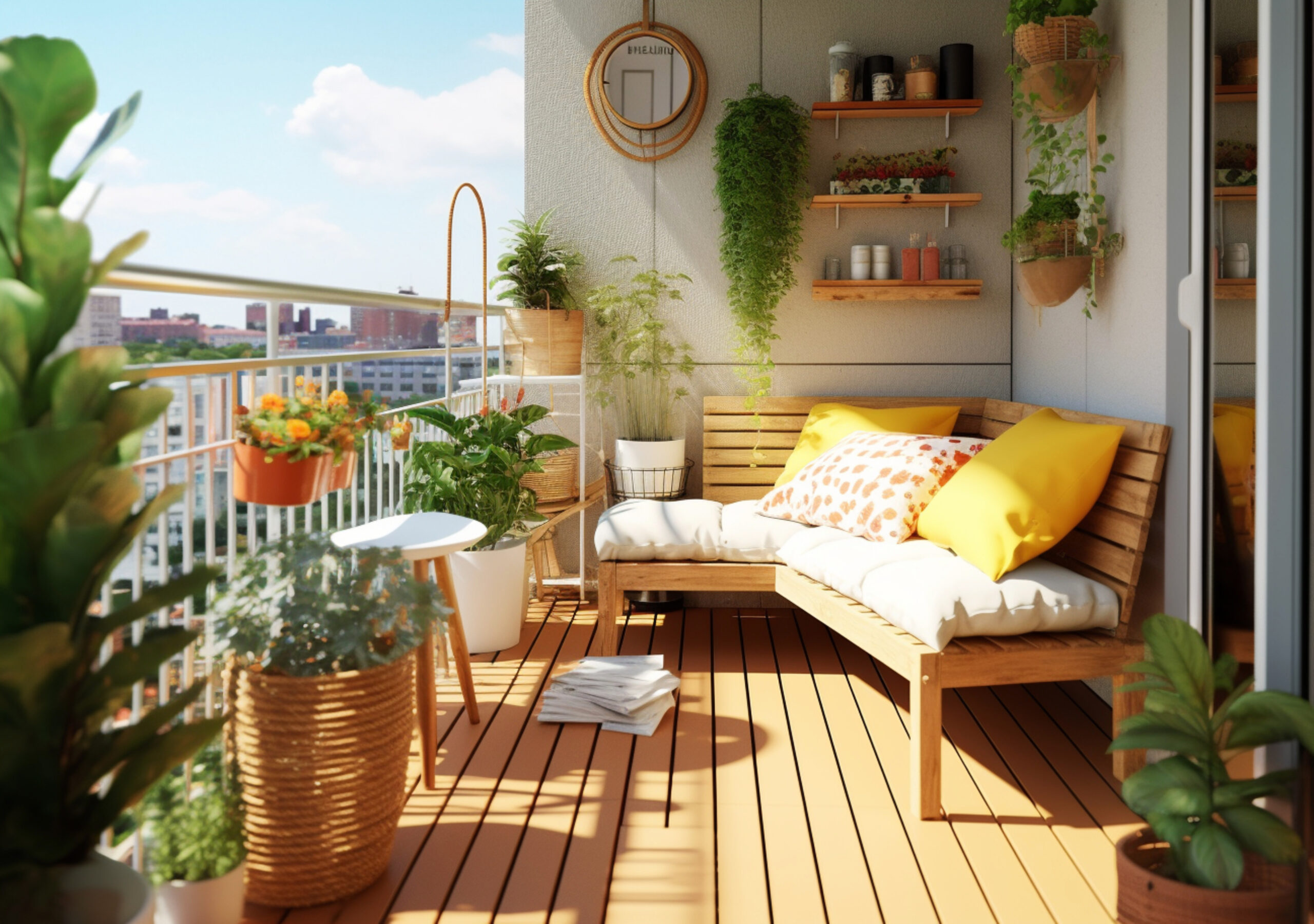Embarking on the journey of planting a garden can be a significant milestone, a testament to the home you’ve created, even if it’s a rented house or apartment. Your new space can transform into a canvas for container, vegetable, or ornamental gardening, a testament to your green thumb and creativity.
Many rental homes have witnessed the birth of passionate gardeners. Despite the temporary nature of their living arrangements, people strive to infuse their space with a personal touch, and for many, a garden is the perfect avenue for self-expression and home customization.
Growing a garden in a rental is challenging, yet doable. It all depends on the limits the landlord places on a renter. Even without limits, a renter should discuss garden plans with the landlord and negotiate a garden space before altering any part of the property. Some landlords appreciate tenants taking care of a garden, especially if renters invest in trees and shrubs. Other landlords want only an expanse of grass that the tenant waters and mows.
Even when there are severe restrictions on gardening, you may be able to have a garden in pots on a balcony or a deck. This might be the case if you live in an apartment or condominium. Small balconies can become havens for potted plants where you can start seed, grow food or sustain a crop of flowers.
Investing in large, frost-proof containers is a wise decision, because like furniture, pots and plants move with you. Start with one or two and build your collection as you can afford.
As a renter, you can start to invest in a future garden when you buy a small tree and group plant it in pots with shrubs, perennials and annuals. As the tree grows, you can upsize it to larger containers. When you purchase your first home, a much larger tree is ready to go into the ground. The same goes for shrubs. If you want to save money, buy them small and grow them to larger ones that you eventually plant in the ground.
Nurseries are excellent places for fledgling gardeners to get advice when they first dip their hands in the dirt. Nursery personnel look for ways to match the needs of their customers with plants, no matter their skill level.
“Some people may prefer certain colors, fragrances, or types of plants. Understanding their preferences helps suggest suitable options,” Clare Argast from Blooming Junction in Cornelius, Oregon, said. She believes it’s essential to understand customers’ goals and purposes before advising them. She tailors her advice to conditions, size, location, and gardener experience.
Bekki Jamison of Farmington Gardens in Beaverton, Oregon, said, “Even for the gardeners who can’t put in a permanent garden, raised beds and freestanding containers are fantastic options.”
“For a small outdoor space, there are a variety of patio-specific plants, such as blueberries, raspberries and tomatoes that are meant to grow in containers. Strawberries, lettuce and radishes are very prolific crops that are easy to grow too; and delicious.”
According to Jamison, you can also plant crops such as radishes, carrots and beets from summer to fall, extending your harvest into winter.
“Of course, it’s very important to check the requirements within the rental agreement. Check about what can be planted on a balcony. No one wants water from a balcony above them dripping on their head!”
Argast suggests renters grow easy-care herbs and vegetables such as tomatoes, peppers, lettuce, basil and mint in containers. “Consistent watering and fertilizing are essential,” she said. She also recommends using high-quality potting mix to ensure proper drainage and plant health.
“Trellising vining crops such as cucumbers, peas, or beans saves valuable space,” Argast said.
“For limited space, you want to grow food crops with minimum impact, focus on plants that are productive, space efficient, and relatively low-maintenance.”
Argast recommends leafy greens like lettuce, spinach, kale, and Swiss chard. “They can be harvested continuously by picking outer leaves, allowing the plant to keep producing.”
Herbs such as basil, parsley, cilantro and mint thrive in containers. Add a trellis for space-saving vertical ornamental vines and hanging baskets.
If you want an in-ground garden, talk to a potential landlord and ask if they have restrictions about growing food, putting in shrubbery, or planting a tree before you move in.
If you are already renting a home, ask for permission before you point your shovel to the ground. Check your lease for restrictions on modifying the property.
Argast recommends that you get the landlord’s approval for the garden in writing and address any concerns the owner might have. Once you are given the go-ahead, she said, “Take good care of the garden, keep it tidy, and adhere to any guidelines set by the landlord.”
Debbie Teashon is co-author and photographer for Garden Communicators award-winning Gardening for the Homebrewer, and a regular contributor to regional magazines. Her gardening website is www.rainyside.com.

